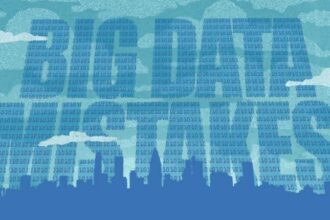Cross posted at International Institute for Analytics
Cross posted at International Institute for Analytics
McKinsey just published a new study “Big Data: the next frontier for innovation, competition and productivity” that is definitely worth reading. With lots of detail – it runs to more than 150 pages – it discusses why there is so much more data, what that means and how this data can be used, how it impacts some key industries and much more. It’s full of actionable advice and, in particular, highlights 5 cross-domain recommendations:
- Make big data more accessible and timely.
Transparency, enabled by big data, can unlock a great deal of value. - Use data and experiments to expose variability and raise performance.
- Segment populations to customize.
Big data allow organizations to create ever-narrowing segmentations and to tailor services precisely to meet customer needs. - Use automated algorithms to replace and support human decision making.
Sophisticated analytics can substantially improve decision making, minimize risks, and unearth valuable insights that would otherwise remain hidden. - Innovate with new business models, products, and services.
It seems to me that Decision Management and these recommendations go together.
- Make big data more accessible and timely using Decision Management Systems
McKinsey make some great points about making it east for multiple data sources to be used together and for analysis to be crowd-sourced. Making data available can be problematic too though- there are privacy and other issues to be concerned about. If the big data in question is encapsulated in a predictive analytic model that drives a Decision Management System, however, you can deliver wide accessibility to what the data means without having to make the data itself widely available. Predictive analytic models, and the decisions driven by them, do not need personally identifiable information to work. This means that data can be shared and integrated without putting people’s identity at risk and yet this data can still be used effectively. For instance data about everyone’s shopping habits can be used to drive effective discount offers for people without the builders of the model knowing who bought what and without requiring that the person getting the offer has identified themselves – the matching of behavior is enough. Check out this great example of effective analytics with privacy for instance. - Use data and experiments to expose variability and raise performance especially if you are using Decision Management Systems
McKinsey wrote about it in as a top trend and the role of adaptive control or champion-challenger in Decision management systems is well established. Using Decision Management to focus on operational micro decisions creates the infrastructure you need to conduct experiments. Because operational decisions happen every day in large numbers you can run experiments, trying different offers or pricing on different customers and then analyzing these approaches to see which works best. Using adaptive control to vary rules and analytics within a decision makes this kind of experimentation easy to manage and allows you to do it continuously without having to incur large start up costs for each experiment. Continuous improvement in results is the outcome. - Segment populations to customize the way your systems treat people using Decision Management Systems
Customizing the way you respond to customers, patients or citizens is a key driver for adopting segmentation and clustering analytics. As McKinsey says, using analytically valid segments to drive differentiated treatment is a powerful tool. It is important to remember, however, that your systems do a tremendous amount interacting with your customers. If you can only deliver this analytic insight to people then you will not improve the way your kiosks, your ATMs, your websites or the systems that support your front line staff treat your customers. Only if you have taken control over these front-line decisions with Decision Management Systems can you embed the segmentation insight so that it will affect every interaction. - Use automated algorithms to replace and support human decision making by implementing Decision Management Systems
This point is a straight up call for Decision Management Systems. Replacing and supporting human decision makers is what Decision Management Systems do. - Innovate with new business models, products, and services With more data available to all – one of the key drivers for big data – and with the ability to store large amounts of data as people use SaaS / cloud based systems, building and selling these kinds of service will become increasingly practical and interesting.
Big data, and analytics based on big data, are clearly here to stay. Their influence is only going to grow and McKinsey is right to tell you to get out ahead of this wave as best you can. One of your tools for doing so is the effective adoption of Decision Management so that you can build and deploy Decision Management Systems.







